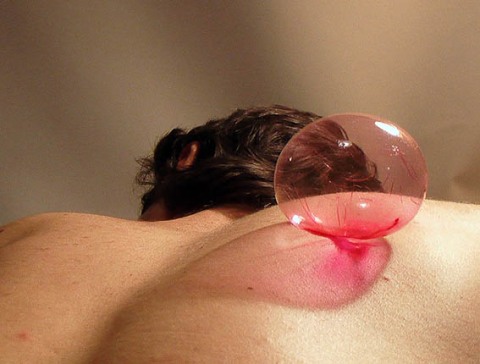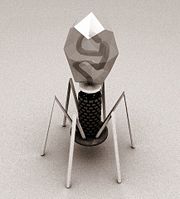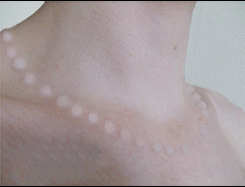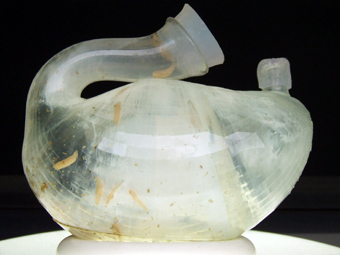Antibiotics don’t work…
December 12, 2008
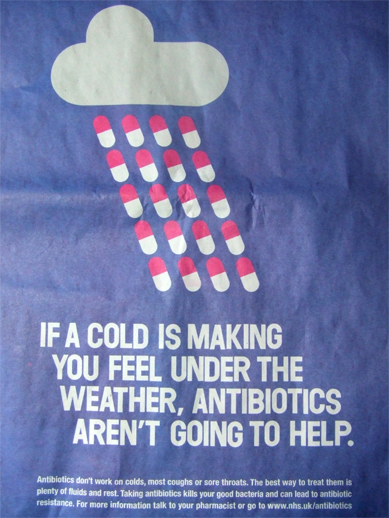
NHS antibiotics awareness campaign
National Health Service antibiotic awareness campaign, Winter 2008
As we venture into space we are not alone!
May 29, 2008
Houston we have a problem! We cannot escape the fact that humans are a thriving conglomeration of bacteria and microbes, which are essential to our biological functions. However if you’re NASA, or any other space-exploring organisation for that instance, this presents a problem.
Microbiology Today reports on the microbiota that has already made the transition to space. “The first extensive in-flight studies of microbial diversity were carried out on the Russian space station Mir. Mir was humanity’s first long-term inhabited outpost in space, launched in 1986 and consisting of a five-port docking hub with connected resupply ships and habitation modules. Over the course of the station’s
almost 15 years of service, numerous studies were conducted on the biota surviving”.
Widespread bacterial colonisation was found, particularly in free-floating water globules due to the antigravity system. Contaminants due to human occupation were found throughout the station, and alongside the bacterial biota, these included fungi, amoebae, ciliated protozoa and even dust mites.
As reported, our species has the responsibility as explorers of not inadvertently spreading our “terrestrial contamination to the extraterrestrial locations we visit”.
We cannot escape the fact that when we travel from our planet, our symbiotic friends go with us. With probes, satellites and unmanned missions we can sterilise our equipment to make sure our earth-based microbes don’t contaminate other planets. On the current Mars mission a biobarrier bag – effectively an interplanetary condom – will protect the excavation digging arm from carrying bacteria to the planet. It will only be unsheathed once on the Martian surface.
Here lies the problem, when we eventually send manned missions to Mars or other planets we can’t sterilise ourselves. We wouldn’t be human without our microbial fauna.
If we do decide to venture into space there’ll be little we can do to stop taking our microbial fauna with us. But perhaps this is the natural system of transporting life around the solar system and has been happening from the birth of our universe. Maybe we should be equally worried about what alien microbes may hitch a lift back to earth with us from the places we visit.
Symbiotic gut bacteria reprogram our immune system
May 28, 2008
A team of scientists led by Sarkis K. Mazmanian, Assistant Professor of Biology, at California Institute of Technology have discovered that the bacterial flora of our gut can be actively stimulated to promote health.
The 100 trillion bacteria occupying the human gut have evolved alongside our digestive and immune system over millions of years. Intelligent bacteria have shaped their gut environment by positively interacting with the host immune system to promote health. Mazmanian reports the bacteria are actively modifying the gut through the mediation of molecules. The scientists have identified that a symbiotic gut bacterium Bacteroides fragilis, produces a sugar molecule called polysaccharide A or PSA with health boosting benefits.
In this case PSA induces immune-system cells called CD4+T cells to produce interleukin -10 (IL-10), a molecule shown to protect against inflammatory bowel disease.
The scientists predict that other types of symbiotic gut bacterium produce molecules with similar health benefits. This discovery radically changes our perception and relationship with our bacterial-ecosystem. It reveals that bacteria actually reprogram our own immune system to promote health.
As previously outlined in this blog and through my creative practice ‘The Race’ aims to create visions of a bacterial-centric society. As demonstrated by Mazmanian’s research, I feel we need to re-align our understanding or ourselves, our metagenomics and the complicated interactions we have with our human microbial ecosystem. To re-evaluate our behavior and lifestyles accordingly.
“Through societal measures we have changed our association with the microbial world in a very short time span. We don’t have the same contact with microbes as we have for millions of years–we just live too clean now,” Mazmanian says. So while it is useful to eliminate disease-causing organisms, “perhaps disease results from the absence of beneficial bacteria and their good effects,” he suggests. “This study is the first demonstration of that. What it hopefully will do is allow people to re-evaluate our opinions of bacteria. Not all are bad and some, maybe many, are beneficial.”
Synthetic Biology and the Body
May 28, 2008
I’ve been revisiting some of the images I created in 2006 envisioning potential convergences of bio and nanotechnology and there combination with the body. I will be posting some of these again along with new proposals.
Image from Nanotopia, 2006. Michael Burton
Beyond the Genome: The Challenge of Synthetic Biology
October 25, 2007
Dr Craig Venter, a leading US scientist in synthetic biology, talked on a panel yesterday at the LSE. As someone who dominates this area of scientific practice and a controversial figure I have inadvertently followed in my research, I jumped at the chance to hear him speak. Also on the panel who gave further insights into ethical, philosophical and practical issues were, Prof. Sarah Franklin (LSE), Prof. Peter Lipton, Dr Chris Mason (UCL) and Prof George Gaskell (LSE).
Venter who founded the J. Craig Venter Institute, has hit the headlines recently with his proposal to design a completely new life-form. Through his institute he famously pushed the mapping of the human genome, in fact he is amongst only two people who have had their genome sequenced, the other being James Watson (co-discoverer of DNA structure). Building on this research he now has bigger sights. He interestingly wants to gain comet samples to sequence bacteria found on the rock, to illustrate the transpermia taking place across the solar system.
The Institute researches areas including Human Genomic Medicine, Environmental Genomics, Synthetic Biology and Biological Energy. Actual outcomes include sequencing bacteria and microbes in the Sargasso Sea to find tens of thousands of new microbal species and tens of millions of new genes. Also constructing whole new artificial chromosomes. These can in the future create new microbes and biofuels that through microbal metabolism eliminate carbon dioxide (CO2) output into the environment and capture back current CO2 in the atmosphere .
Venter talked about the process of creating new synthetic chromosomes to establish the needs and importance of each gene. He used the metaphor of electronics to explain the processes behind the production methods. “Using new methods the group improved the speed and accuracy of genomic synthesis by assembling the 5,386 base pair bacteriophage φX174 (phi X)”. Here the software ‘bacteriophage’ is used like software to create and synthesis the hardware, to build the phi X 174 genome.
I am fascinated by synthetic biology and it’s potential to radically transform our technological production methods and our command on living systems. To quote from the institutes website:
“Fast becoming one of the hottest new fields of biology, synthetic biology has the potential to impact all areas of society. One of the tenets of chemistry states that to prove true understanding of a structure one must be able to synthesize it. The team at the Venter Institute is concentrating on new methodologies to synthesize large segments of DNA to eventually enable the construction of whole artificial chromosomes. This is the next logical step in genome biology as it is the only way to better understand the minimal component of cellular life and understand the evolution of life. Through new understandings of gene and genome function researchers could one day more efficiently develop pharmaceuticals, chemicals, and textiles.”
More to come on Venter’s talk and misuse and ethical implications.
Links:
New approach to fitting disease and MRSA >>>
Gisèle Vienne: Kindertotenlieder
October 25, 2007
Whilst on a flying visit to Nottingham this weekend I caught the performance of Kindertotenlieder (Songs for dead children) by choreographer/artist Gisèle Vienne, as part of the brilliant nottdance festival.
The piece combined aesthetically stunning scenography, live black metal music by KTL (Stephen O’Malley & Peter Rehberg), narrative by Dennis Cooper and alongside human performers, the subtle movement of mechanic teenage sized dolls.
Not for the faint hearted, the piece perfectly demonstrated the power of live performance. The work arrested and assaulted the senses in its beauty, dark visions and relentless music, which inhabited the body with intensity of vibration and imagination.
Vienne considers the stage as a place to “resuscitate the dead”, a limbic space between dream and reality. Her work and creative skills produce amazing life-size dolls, enabling her to explore the central concept in her work- “the relationship between natural and artificial bodies”. Kindertotenlieder specifically draws on the representation of the body in traditional Austrian iconography and customs like the ‘Perchten’. The Perchten (pictured below), two of which terrorized the stage, are creatures who appear mid-winter to offer protection against demons and to punish cursed souls. A custom still alive today, Vienne explores the collision of fantasy, ritual, ceremony and reality.
The piece as evident in its contextual references drew intelligently from juxtapositions. These include Feud’s notion of the ‘uncanny’ (something both familiar and alien), as well as dark narratives and violent depictions balanced by beauty and lightness of falling snow. Alongside the snow bringing a magic spectacle to the piece, I also found it to be an interesting device. Through its beauty and deathly silence it dominated the pictorial plane of the stage and physically erased the violent actions which previously unfolded.
By no stretch of the imagination was it an easy piece – but more challenging and disturbing in nature. For some members of the audience the show was too much but for me, it re-affirmed the importance of risk taking, the importance of live experiences and a respect for rare imaginative vision.
Tackling Obesities: Future Choices Launch
October 18, 2007
Yesterday was the launch of Foresight‘s (Government Office for Science) Tackling Obesities report at the RSA , London. The report was the culmination of two years research and investigation into a future obesity epidemic.
Over the summer of 2006 I worked as an intern, alongside Jessica Charlesworth, to help Foresight vision the impact of the predicted obesity epidemic over the next 50 years. I am personally fascinated by the evolution of human physiology and behavior according to our desires, changing self-perceptions, scientific and technological developments – so it was great to have access to Foresights extensive research and insight into our obesity future. Some highlights of our work with foresight can be found on my website and at Jess’ blog.
The findings of the report are already hitting the press, with more attention to ‘passive obesity’ and the ecological perspective of influences fueling this epidemic. Here, an obesogenic environment includes our built environment, energy-density foods, grazing, lower levels of physical activity, stress, genetics, media and food advertising. What’s more we are biologically hard-wired to prepare for famine and store energy in the form of fat as an evolutionary survival mechanism.
Our work considered the evolution of the body in response to an overtly obesogenic environment and some proposals for tackling the problem. Our project aims to be a point of provocation informed by Foresight’s extensive consultation with leading world scientists, experts and other stakeholders in order to stimulate debate in Government as well as the general public.
the great exhibition flies
July 10, 2007
The great exhibition flies have finally hatched!

The Maggot Cohabitation piece as mentioned previously on this blog has completed it’s cycle. Those visitors to the RCA’s ‘Great Exhibition’ this summer would have seen the piece in its larvae stage. Now the maggots, which were replaced every day, have started to hatch into flies. See them in action on my website in this breif video>>>>
As central to the concept of the piece, the flies are now released which completes the cohabitation cycle with them. Come back soon for more updates as more maggots make their metamorphosis.
Maggot Cohabitation
June 19, 2007
Recently parliament debated the widespread roll-out of the use of maggots in contemporary hospitals and the National Heatlth Service (NHS). The case for support is amazingly persuasive:
Maggot therapy only takes five days to treat a wound compared with 89 days for traditional methods. The larvae disinfect wounds by killing bacteria, even superbugs like MRSA as they feed on necrotic tissue. They stimulate the regeneration of living tissue and are more precise than human surgeons.
Their use will save the NHS over £30 million.
Yet most patients opt out of this treatment for fear of another organism feeding from their body. The response to maggots is one of recoil and repulsion. What is the origin of this reaction? How will the NHS manage and overcome this problem?
The Race asks us to invest in the symbiotic relationship pre and post treatments. You are encouraged to follow the life cycle of the maggots from larvae to their release as flies, taking your genetic material with them.
Zoobiotic Ltd introduction to maggot therapy
Commensal Bacteria
June 18, 2007
New manipulations to the human body and changes in bahaviour are designed to develop commensal relationships with bacteria and other microbes, as we have co-evolved with, to enrich the gut microbiota.
Here fingernail growth is engineered to increase the surface area where bacteria can thrive. With our changing relationship with bacteria, the habit of biting nails is encouraged as a means of consumption. Teamed with very specific micro-environments this is a desirable way of consuming dirt and particularly the bacteria Mycobacterium vaccae, to boost health and well-being.


